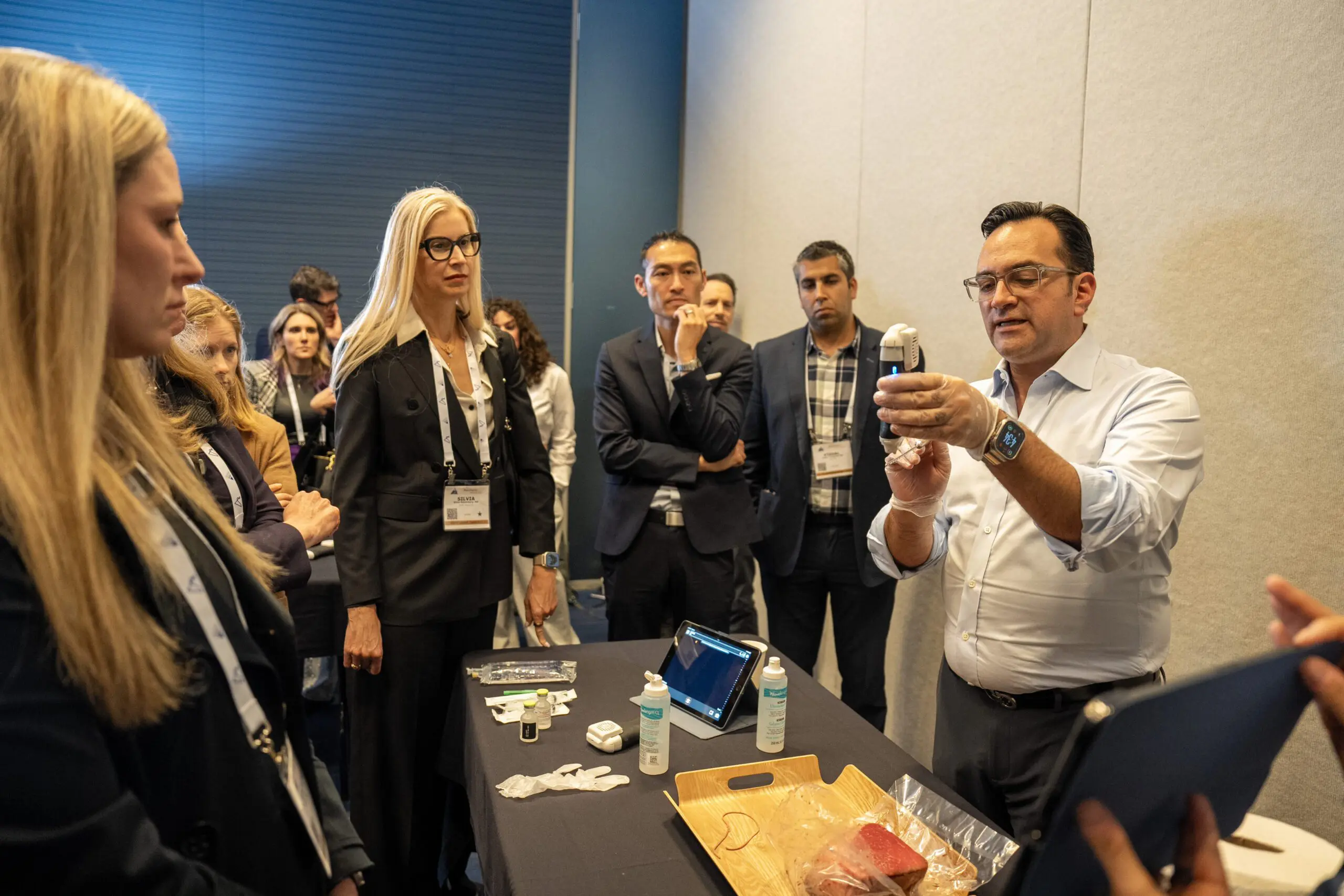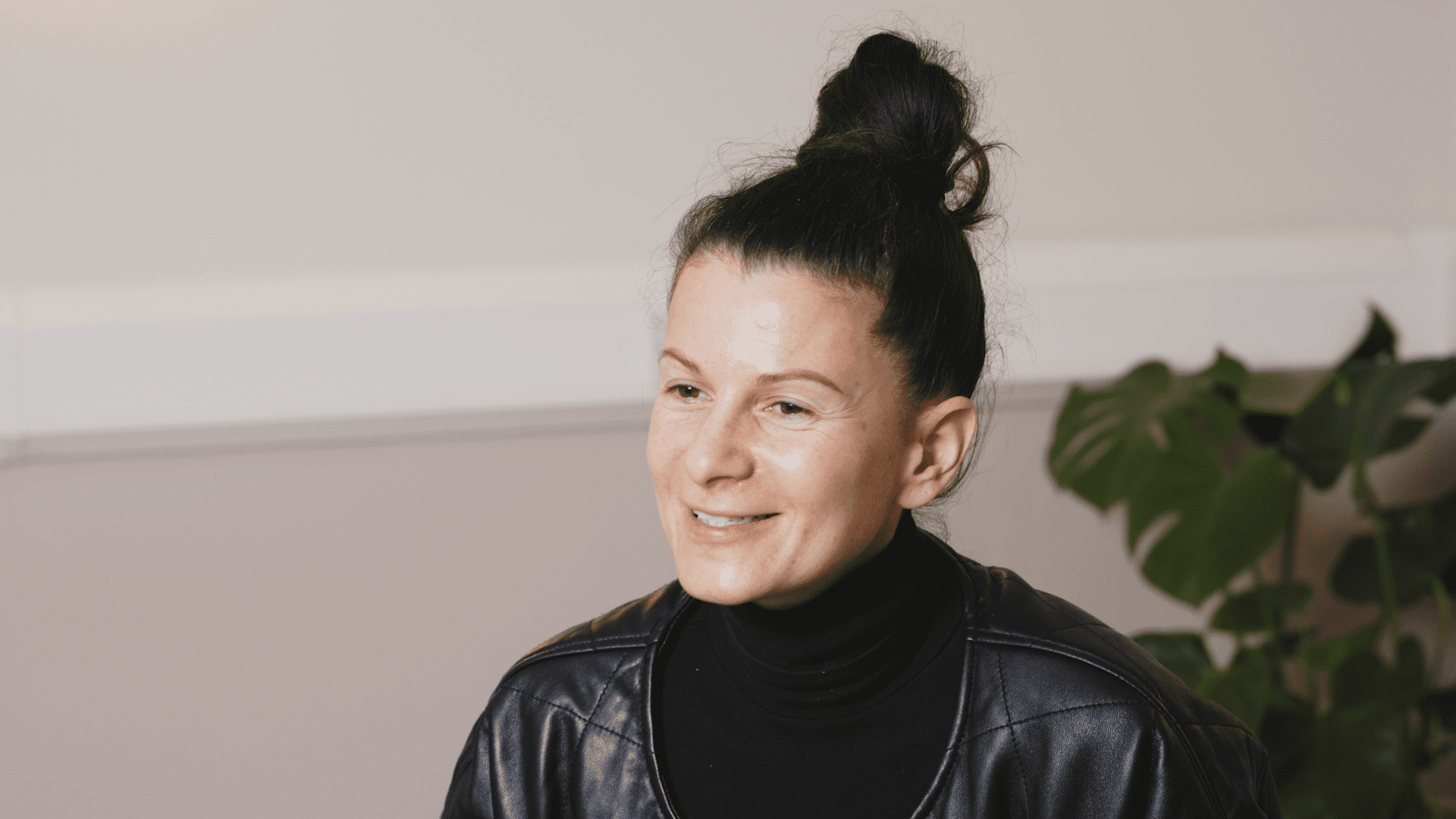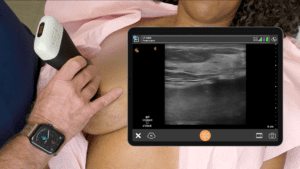Dr. Ines Verner is an Aesthetic Dermatologist based in Tel-Aviv with more than 20 years of experience performing aesthetic procedures. She is a renowned speaker at industry conferences and is considered a key opinion leader in her field. Dr. Verner was a member of the international scientific committee and advisory board for AMWC 2021, held in Monaco, where she presented on the popular topic of «Ultrasound mapping to prevent filler complications.»
We recently had the good fortune to interview Dr. Verner about her experience with Clarius ultrasound, which she has been using for about a year. Watch her video interview or read the highlights from our conversation below.
What are your observations about the growing use of ultrasound for aesthetic procedures?
It’s a breakthrough in the field. We’ve learned quite a lot in recent years about the anatomy of the face, of the neck, also of the body and we’re doing more and more aesthetic treatments. And we’ve been doing them blindly. So, we inject blindly nearly all the time. And I think that once we have the ultrasound, we can inject knowing where we’re going and also not to inject where we don’t want to inject. It’s a game-changer for the industry.»
When do you think ultrasound is indicated for aesthetic procedures?
There are actually three main indications:
1. To visualize the filler or to visualize if the patient is coming with a problem. Some patients don’t remember where they’ve had fillers. Sometimes the filler can actually move from one area to another.
2. To prevent intravascular injections, because the biggest risk when we are injecting is to go intravascular. This can lead to blindness. This can lead to skin necrosis. This can lead to emboli. This is a very, very dangerous complication. So, this can actually be prevented by visualizing the vessels.
3. To treat a problem with a filler. So, for instance, if we have filler granuloma, or if a filler is injected not properly, or even if it is injected intravascularly, then we can actually use the ultrasound as a guidance to actually treat this complication. And we can see where it is. We can see where the filler is located and we can actually treat it accordingly and precisely where we need to be.»
Is ultrasound becoming standard practice for aesthetic professionals?
I do see ultrasound becoming a standard for aesthetic procedures. I think it will take some time for doctors to accept it and for us to learn how to do it. We need to have exact protocols for the aesthetic clinics, because every doctor who will use the ultrasound needs to know what they have to do, what exactly needs to be visualized, what needs to be measured, and how it needs to be approached, and what needs to be checked.»
How do your patients react when you use ultrasound?
Patients are very excited and amazed when we use ultrasound. It impresses them when we can show them what we’re doing, where their vessels are and how the filler is injected. It also makes patients feel safer and they feel they’re in a high-end clinic. For example, when patients come in with complications from other doctors and they have a nodule or something on their forehead or on their mid-face, then we do the ultrasound and they are excited we can diagnose the issue. They feel safe and that they’re in good hands.»
When did you start using ultrasound at your clinic?
I started using ultrasound in my clinic about a year ago. I started with the Clarius L15 HD to check the subcutaneous area because we were doing some studies on energy-based devices and we wanted to actually see the effect on fat. Then I learned about the Clarius L20 HD, and I bought it for injections.»
Why did you choose Clarius HD?
I purchased the Clarius scanner mainly because it’s wireless. I like it that I can carry it. I like it that it’s small. I can take it with me if I need to go somewhere and check things out. We have many rooms in the clinics and I can move from one room to another. Also, I like it that there is a cloud storage where you can actually check out the pictures and see what you need to do and evaluate things afterwards.»
Was image quality a factor?
… the image quality is very, very good. And this is due to the frequency that this ultrasound has. It has a 20-megahertz frequency, which actually gives the possibility to have very, very good image quality up to four centimeters in depth.»
How do you find performing procedures with Clarius?
I find doing procedures with the Clarius quite easy. I have to say there was a learning curve. Now I’m really fast with it and can easily do the mapping and capture images in five minutes. I’m getting better all the time. The wireless connection is very fast and there are no wires to get in the way.»
What treatments do you use Clarius for at your clinic?
At our clinic, we use it for filler injections to prevent intravascular injection. Secondly, to treat complications of fillers, that we did a lot because you can really visualize the problem. Also, we’ve been using it for energy-based device treatment of the fat. For instance, when we are doing lipolysis, it can really visualize what is happening in the fat tissue. And finally, we’ve just started using it with radiofrequency technologies to really evaluate the effect on the skin.»
What about disinfection? Has that been an issue, especially with COVID-19?
The device is really easy to clean. You just take some alcohol and you clean it. It’s perfect. The disinfection is easy to do. We had no problem using it all the time, even when we had a surge of patients coming back after the shutdowns.»
Do you think Clarius is good value?
From my perspective, it is good value for money. And actually, I have two in the clinic for now. So yes, I think it’s good value. I think doctors can buy multiple devices and I don’t think the price is a limiting factor for a clinic. Mainly for an aesthetic clinic, it’s really not a limiting factor.»
After a year of using Clarius, why do you think it’s a good fit for aesthetics?
Clarius is a good fit for aesthetics, because it’s easy to use, the image quality is good. We can really see what we need to see. I think the new Clarius L20 HD3 is a very good technology for the aesthetic clinic. The transducer head is quite small, so we can use it in different areas of the face.»
Interested in learning more about Clarius Ultrasound for Aesthetic Procedures?
Watch our recent on-demand webinar with Dr. Steven Weiner and Dr. Stella Desyatnikova to learn how to treat filler complications like a pro: Facial Aesthetic Complications: Using Ultrasound to Dissolve Fillers and Reverse Vascular Occlusions.
More aesthetic clinicians are using Clarius HD3 handheld ultrasound every day to ensure safer procedures and better results. Dr. Verner uses the Clarius L20 HD for injections. It’s the world’s first high-frequency ultrasound in a handheld scanner, with exceptional superficial imaging for facial aesthetics.
Contact us today or request an ultrasound demo to see how high-definition imaging can help you improve safety and deliver consistent patient outcomes in your aesthetic practice!














